Text
My Fav Korean Manhwa Recommendation List
For the last few days, I've been reading Korean manhwa/webtoon series non-stop and man, they're just so great!!! 😍😍😍
These are some of my fav manhwa I've read so far... All the stories are of modern setting btw... (I may do a separate recommendation list for historical/magical/isekai genre manhwa later on...)

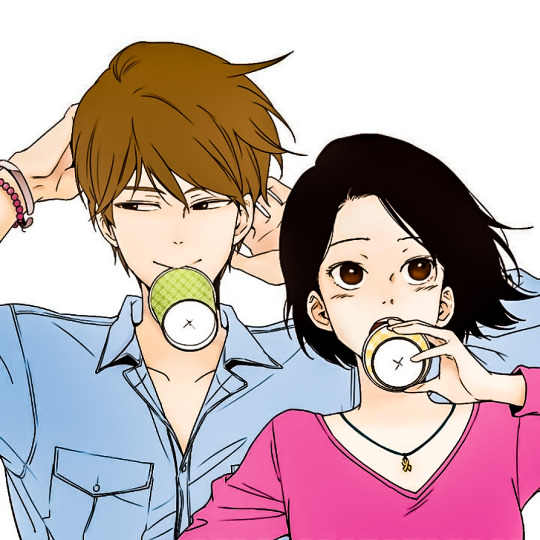
Something About Us - (Childhood best friends turned lovers)
Status: Completed.
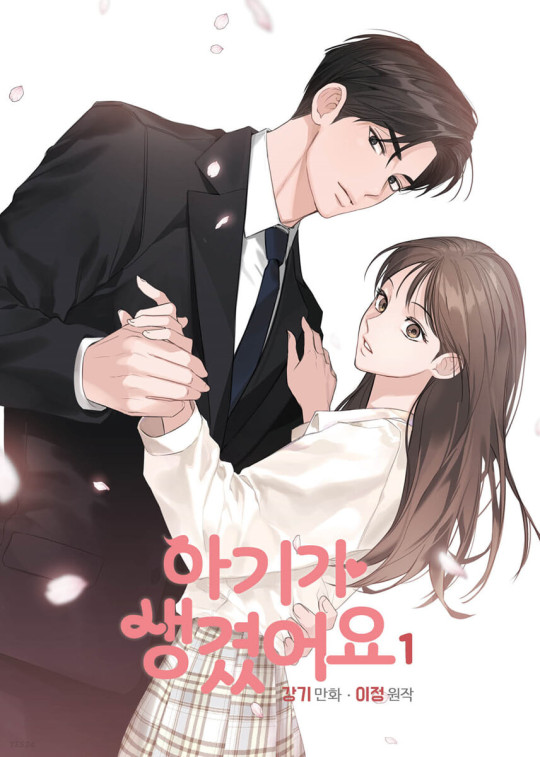
Positively Yours - (Strangers met for one night stand to lovers)
Status: Completed.

Seasons Of Blossom - (High school friends to lovers)
Status: Completed.

Please Take Care Of Me In This Life As Well - (Childhood friends to lovers)
Status: On-going.
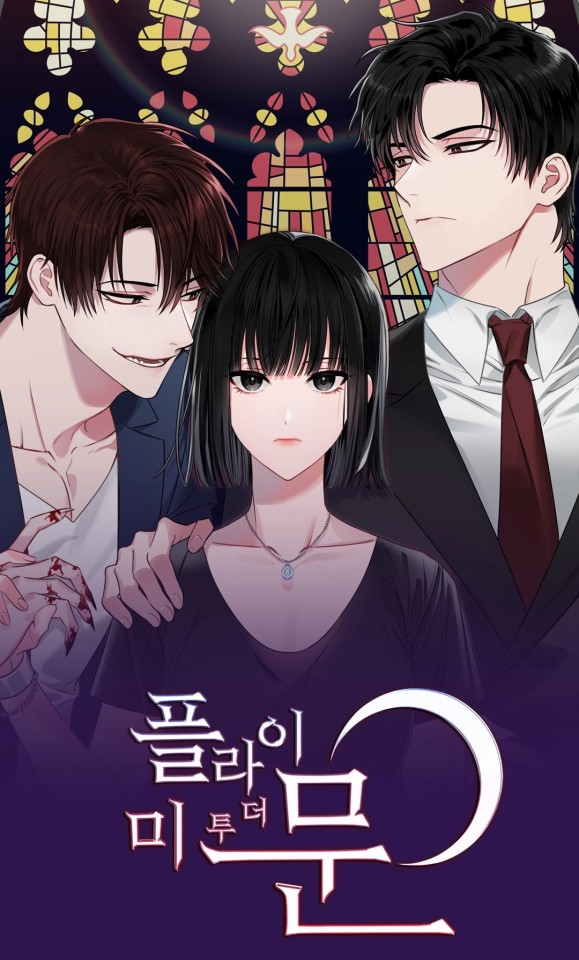
Fly Me To The Moon - (Strangers met through unusual circumstances to lovers)
Status: On-going.
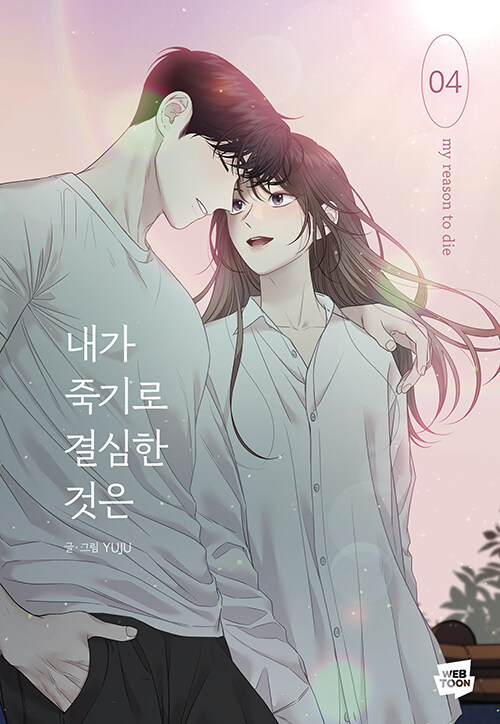
The Reason I Wanted To Die - (High school sweethearts to Exes to again lovers)
Status: On-going.

Revelation Of Youth - (High school friends to lovers)
Status: On-going.
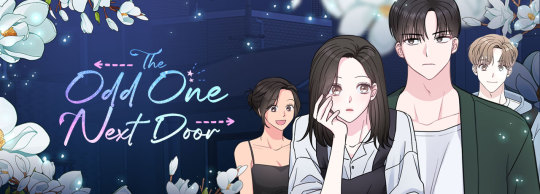
The Odd One Next Door - (Frenemy neighbors to lovers)
Status: On-going.
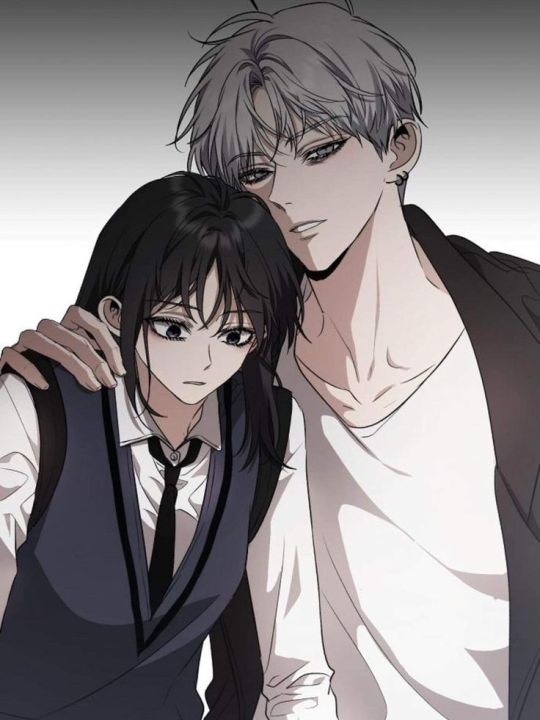
Free In Dreams - (Strangers met through lucid dreams to lovers)
Status: On-going.
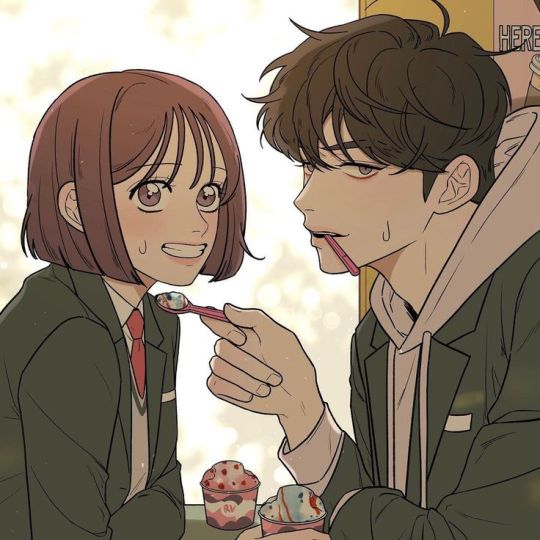
Operation Name Pure Love - (High school friends to lovers)
Status: On-going.
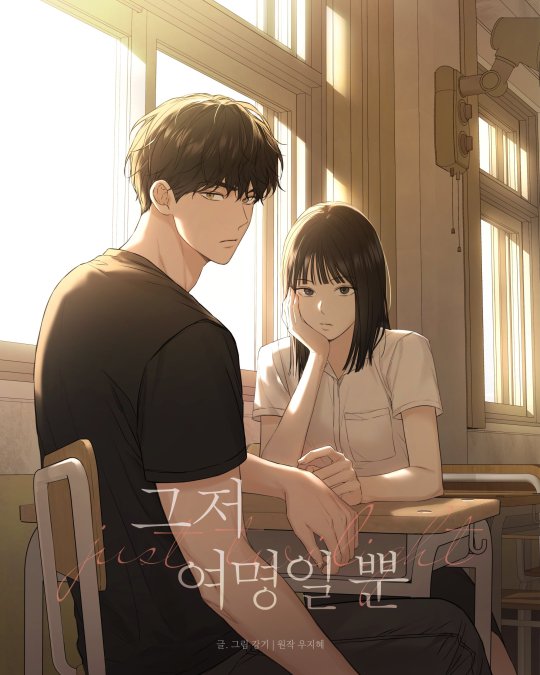
Just Twilight - (High school classmates to lovers)
Status: On-going.
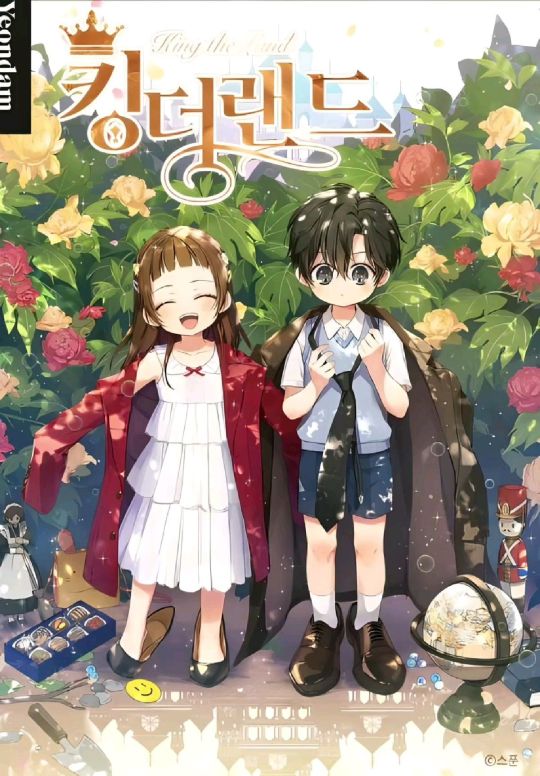
King The Land - (Childhood friends to lovers)
Status: On-going.

Confession Attack - (Childhood best friends to lovers)
Status: On-going.
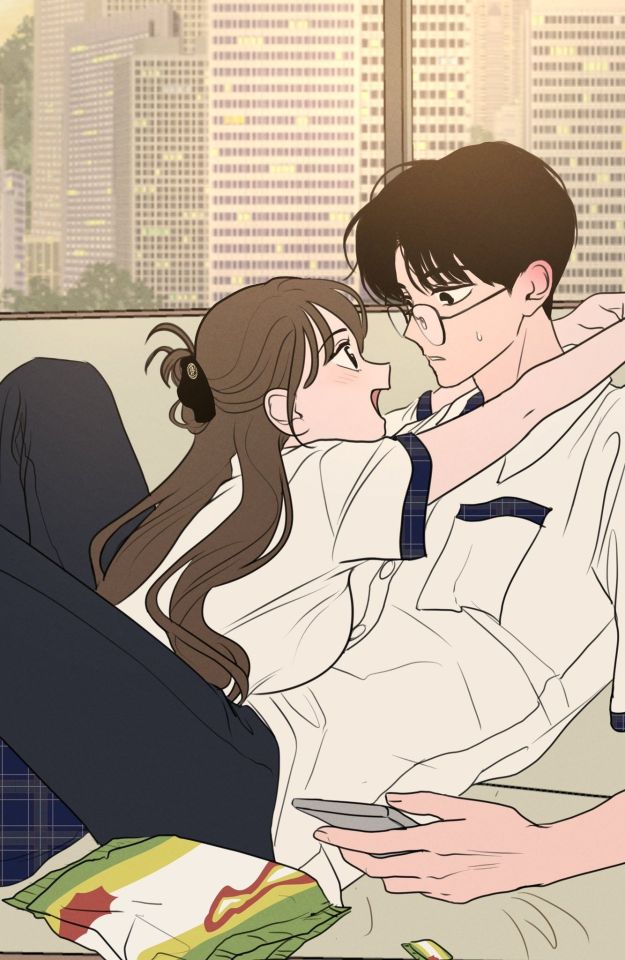
Our Secret Alliance - (Childhood best friends to lovers)
Status: Completed.

Ooh La La!! - (Complete strangers to sudden lovers)
Status: Completed.
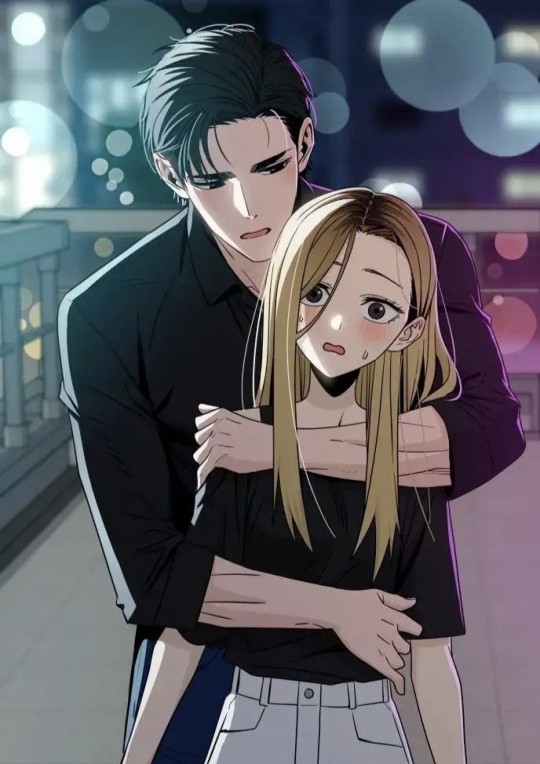
Match Made In Heaven By Chance - (Childhood friends to sudden married couple)
Status: On-going.
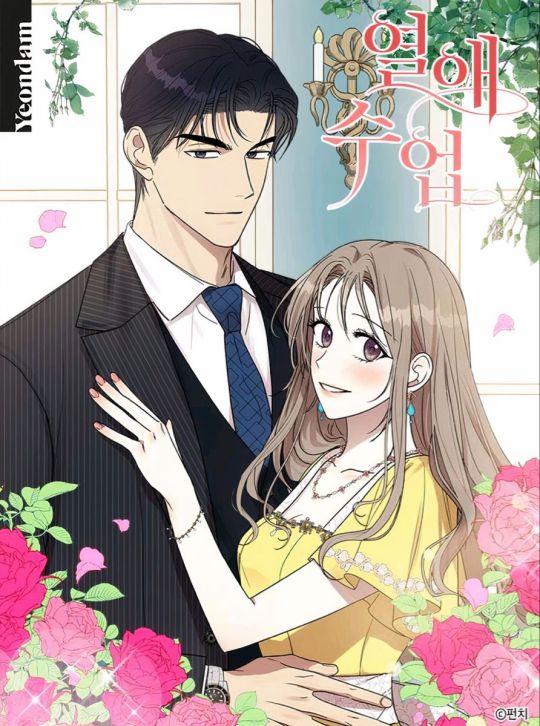
Love Class - (Former high school Teacher X Former high school Student love story)
Status: On-going.
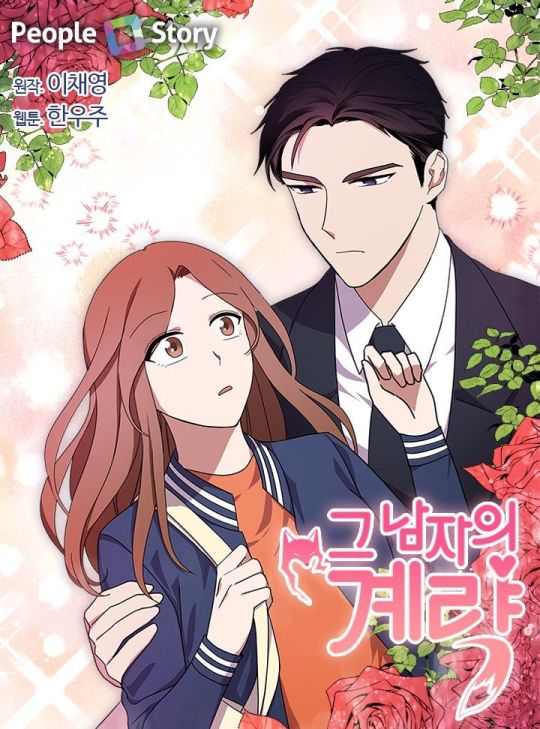
The Man's Games - (Childhood frenemies to lovers)
Status: Completed.
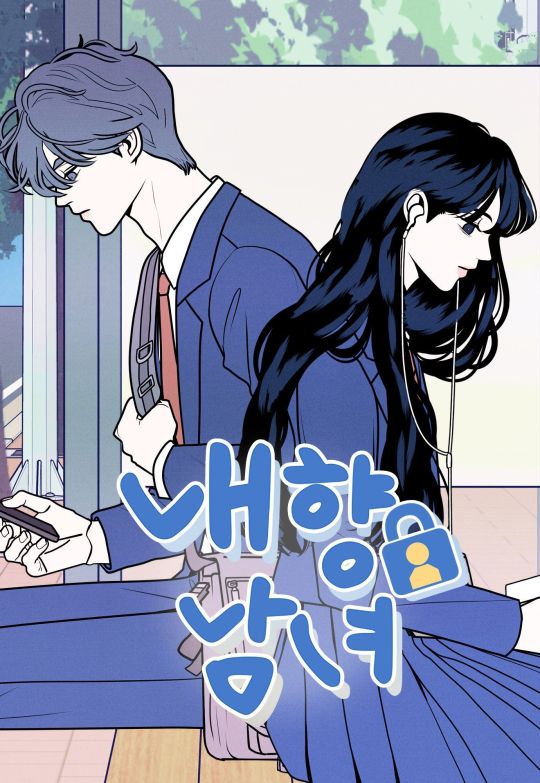
My Introverted Boy - (Introverted boy X introverted girl love story)
Status: On-going.

The Dilettante - (Enemies to lovers)
Status: On-going.

Olgami - (Enemies to toxic lovers)
Status: On-going.

The Law Of Being Friends With A Male - (Classmates to friends to lovers)
Status: On-going.

My Three Annoying Brothers - (Separate love stories of 4 beautiful yet chaotic siblings)
Status: On-going.

Divorce Is Easy, But Love Is Hard - (College Senpai-kouhai to office colleagues in love)
Status: On-going.
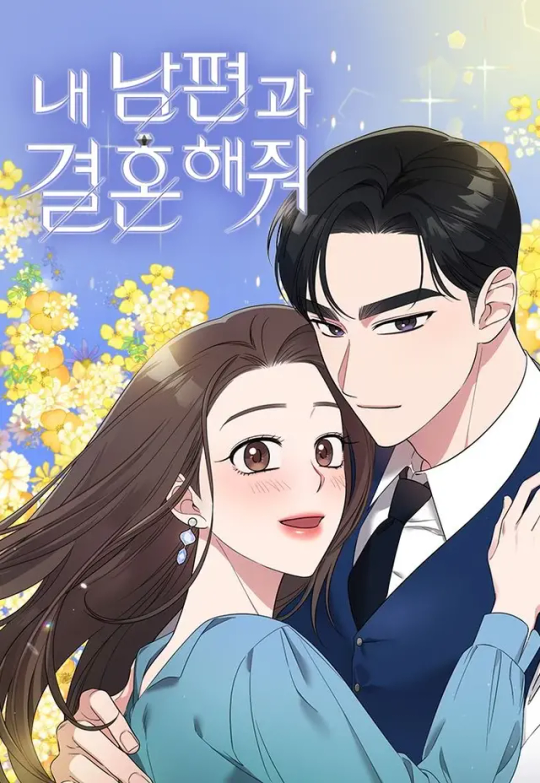
Marry My Husband - (Office senpai-kouhai to lovers)
Status: Completed.
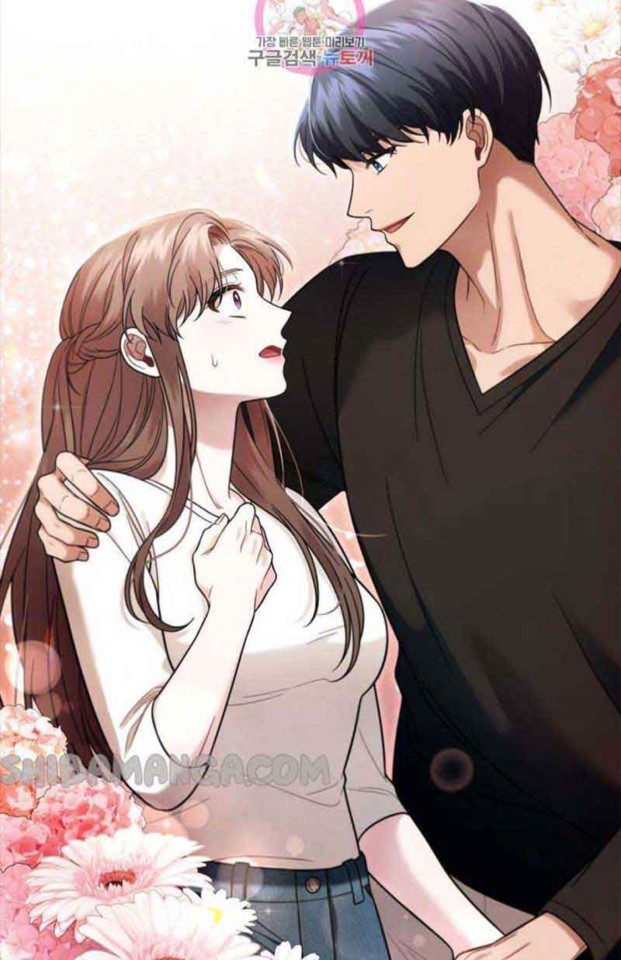
The Boss's Proposal - (Office senpai-kouhai to lovers)
Status: On-going.

When You're Targeted By The Bully - (Enemies to friends to lovers)
Status: Completed.

The ones I haven't read yet, but intend to read them later in the future...
Love Of Mine.
A Guide To Proper Dating.
Act Like You Love Me!
The Couple Breaker.
There Must Be Happy Endings/Surely a Happy Ending.
Love For Hire.
Daytime Star.
First Love, Lasting Hate.
Extroversion Of An Immortal.
True Beauty.
Wedding Delusion.
Even If It's Not.
Only Hope.
Meet In The Middle.
Situationship.
My Sweet Dark Hero.
Dating My Best Friend's Sister.
Undercover! Chaebol High School.
Dear First Love.
Melt Me With Your Voice.
Yeon Woo’s Innocence.
My Messy Marriage.
As If Love Doesn’t Exist.
Let’s Meet After Work.
Please Teach Me, Senior.
#manhwa#anime#manga#romance manhwa#manhwa recommendation#something about us#please take care of me in this life as well#positively yours#our secret alliance#seasons of blossom#revelation of youth#olgami#the reason i wanted to die#my reason to die#operation name pure love#fly me to the moon#when you're targeted by the bully#the boss's proposal#marry my husband#the law of being friends with a male#the dilettante#match made in heaven by chance#love class#the man's games#confession attack#just twilight#free in dreams#dreaming freedom#king the land#see you in my 19th life
384 notes
·
View notes
Text
Scottish Folklore Creatures
I've been working on a little series of blog posts that bring together what I know about folklore creatures in Scottish traditional lore; rather than sharing them individually I thought I'd keep them all together and add to this post as I go.
Disclaimer: these blogs are largely what I've heard about these creatures from older family members and what I've learned from folktales in books (both children's collections and less sugar coated adult books) - folklore is notoriously complex. While I did secondary research, these posts represent my understanding as someone who grew up in the central belt of Scotland, so you may have heard different versions of the same stories, or read different stories entirely.
Gods I love folklore - anyway, here they are for those who want to read them:
The Baobhan Síth
Redcaps
Cù Sìth
Cat Sìth
The Wulver
177 notes
·
View notes
Text
The US High School System
Depends on the state, and certain factors.
Every school is different. At mine, we have the same six classes everyday. (Some schools have block scheduling, so their students go to different classes everyday. European schools do this, I think.)
Certain schools might do things differently; I’ve heard of schools that switch what classes you have every quarter, or every semester, or sometimes every day. It can be very different state to state, or even town to town. At the school I was in, classes wise, we had the core studies: English, Science, Math, and History. English was mandatory for all four years. The only science necessary was to have two years of science, with one year of lab science.
High school systems in the US varies from where ever you’re at. From how your schedule is like {four to eight classes each semester}, how the school year is broken down, {quarters, trimesters, semesters, etc}, choice of classes. It ultimately falls on what city/state it takes place in, as well as the school district.
more under the cut
Keep reading
296 notes
·
View notes
Text
otp prompts!♡!
(feel free to use <3 I'll get back to the asks as soon as i can guys! my exams are also over :) THE 1ST AND THE 5TH ONE WILL GO SO WELL TOGETHERRR )
massaging your loved one's shoulder and they melt into your touch
you're friends, but, "if i had to choose it'll be you, [name], it'll always be you"
always feeding your lover the first spoon of food whenever you eat together >>>> (my besties do this and i feel babied af i love it)
you're enemies, but, "you don't think this will work do you? us?" and they smile, "I'm not completely paranoid about the idea :)"
"tell me why i married you again." you sit on their lap, rolling your eyes. They grin stupidly, "because I'm funny, smart, handsome and---" they kiss you, and say, "I'm all yours."
watching your partner work while you sit in the corner of their office, swooning over their shirt rolled up to their elbow
^ "uhoh, aren't you loving this a little too much?" "it turns out i love the sight of you being focused more than i can ever imagine." "oh then you should definitely see me focused on you."
being completely under the sheets while holding up the corners to create space for air as your both take turns to rant about your day .。✰*.♡
"i can't wait to marry you. Is it just me who's counting the days?" they wrap their hands around your waist, kissing your temple. "Makes the two of us.. Or three." They blink for a good heartbeat, and they realise. "Oh my god."
"Just because they're your wife/husband, why should i respect them??" "Because they're a much more better person than you. They are respected in the society, and hold a position much stronger than yours. If I were you I'll shake in my knees a little infront of them. They're not the loml for nothing afterall ;) "
#writer prompts#romance writing#otp prompts#imagine your otp#romance prompts writing#writeblr#writing romance#romantic dialouge prompts#comfort dialouge prompts#enemies to lovers trope#otp writing#otp things#otp meme#otp ship#imagine your ocs#imagine your ship#writing ideas#writing prompts#writing inspo#writing inspiration#urfriendlywriter#writing help#domestic lovers prompts#everyday otp prompts#lovers prompts#I want a love like the ones taylor swift sings about. omgmg#smut dialouge prompts#dialouge prompts#otp dialogue#friends to lovers meme
1K notes
·
View notes
Note
Hi! I've had so many story ideas, where I set up characters and start world building but when I actually try to start the book itself, I don't know where to go. Do you have any advice?
Can't Get Past World Building/Character Setup
World and characters are great, but that's not what makes a story.
Stories are made by conflict... a problem happening to your character or in their world that they must resolve. The goal your character creates in the face of the conflict, the steps they take to achieve that goal, the obstacles they face as they try to achieve each step, and how they tackle/defeat the antagonistic force that places those obstacles there and stands between them and their goal--THAT is your story. So, without those things, you just have characters and a world, but no story.
Here are some posts to help:
Understanding Goals and Conflict
Plot Driven vs Character Driven Stories
How to Move a Story Forward
Basic Story Structure
Fleshing Out Plot Ideas
I hope that helps!
•••••••••••••••••••••••••••••••••
Have a writing question? My inbox is always open!
Visit my FAQ
Find answers fast on my Master List of Top Posts
Go to ko-fi.com/wqa to buy me coffee or see my commissions
113 notes
·
View notes
Text
Turning Relationship Arcs into Plots, Part 2: Progress & Setbacks, Costs, and Turning Points
Developing a relationship plotline requires more than the relationship itself. It requires more than a relationship arc. It needs the proper elements of plot in place, otherwise it's not really a relationship plot.
Whether the relationship plot in your story is about love interests, friends, coworkers, mentor and mentee, rivals, or even enemies, and whether it's the A Story, B Story, C Story, or even D Story, it needs to have the proper pieces to be a real Story.
The primary principles of plot are goal, antagonist, conflict, and consequences. Last time, I covered how to apply these to relationships.

The relationship goal will be one of three things: draw closer and/or get along with this person, push away and/or cause dysfunction with this person, or maintain the relationship as is.
The antagonistic force will be what is in the way of the goal. If the character wants to draw closer to the other person, the antagonist pushes them away. If the character wants to be apart from this person, the antagonist pushes them together. If the character wants to maintain the relationship as is, the antagonist is what's disrupting "normal." In some cases, the other character in the relationship is the antagonist.
With the goal and the antagonistic force, the relationship plotline will have conflict. How the characters choose to address the conflict will usually create the arc.
And the conflicts only matter in that they have consequences. What do these characters have to gain or lose in being close? Or in being distant? Often the relationship consequences will affect other plotlines, or vice versa.
Today we will continue talking about relationship plot elements, by covering the secondary principles of plot: progress, setbacks, costs, and turning points.
For a more in-depth explanation of these elements in general, check out my article on the secondary principles of plot.
Below, we will apply these elements to relationship plots.
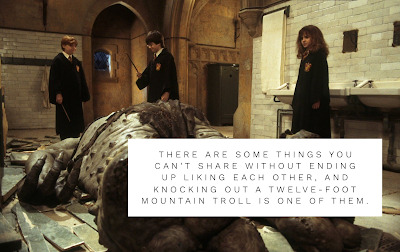
Progress & Setbacks in Relationship Plots
Once upon a time, I was reading a very popular series, and when I got to the last book, the central relationship started driving me crazy. Every time the heroine was with her boyfriend they argued and argued and argued, but it didn't feel like they weregetting anywhere. Their situation was, more or less, the same as it had been from the first argument.This created a circling sensation, which I've talked about before. It happens when a plotline isn't really progressing in one direction or the other (experiencing setbacks).I got to the point where I wished they would just break up. At least then things would be changing and evolving (or devolving).
In short, the relationship plotline wasn't experiencing any real progress or new setbacks. It was just hitting the same conflict over and over. If this has happened to you, don't fret--I've had the exact same problem in one of my manuscripts. Unless you write romance, most of us haven't been taught how to actually write a relationship plotline. And not knowing how to move a plotline forward is exactly what creates this circling sensation.
Remember what I've said in the past: Conflict without consequences is just cleverly disguised filler.
Just as with other plotlines, the relationship plotline needs to be changing, at least a little. As the characters are facing conflicts, they should either begrowing closer or apart. And as with any plotline, there should be some of both (progress and setbacks).
Harry Potter and the Sorcerer's Stone has a great, simple example of this that stands out. Neither of the boys really likes Hermione at first, and Ron outright dislikes her. But the conflict of the mountain troll, and Hermione taking the blame after, cements the trio together. As Rowling simply writes: "There are some things you can't share without ending up liking each other, and knocking out a twelve-foot mountain troll is one of them." Because of the conflict and what happens after, the characters grow closer together.
But anyone who has read the series knows they also experience a lot of setbacks--whether that's Ron and Hermione, Harry and Ron, or Harry and Hermione. At one point or another, each pair thought their relationship might be over.
What "progress" and "setbacks" look like in your relationship plotline will depend upon the goal, relationship type, and plotline itself. For most stories, though, ultimately drawing closer together appears as progress and being pushed apart is seen as a setback. Yet in a negative arc where the characters are genuinely trying to get away from each other, growing apart may be seen as progress, while being forced together appears as a setback.
Because what each character wants in the relationship can change, this can get complex. For example, if Ron doesn't want to be in a relationship with Hermione, isn't the mountain troll incident a setback? But it's the conflict itself that changes his want. Keep in mind: Every conflict has the chance to alter the goal. So it could be that one character decides from the conflict, that he now wants to be close to the other (or, alternatively, apart from her). If the antagonistic force is formidable enough, it will test the character's commitment to the relationship goal--in some cases the character will stay steadfast to the original goal, and in others, he will change that goal(like Ron does).
It's also worthwhile to point out that the audience may have a different point of view. In an enemies-to-lovers romance, the audience will see the enemies drawing closer together as progress, even when the enemies don't want to.
And if this is enough to make your head spin, let me simplify: The point is the conflicts and consequences are creating an ebb and flow of some kind, a zig-zag, through the story. We are going one direction. Then the opposite. Back and forth.
In contrast, circling isn't a zig-zag. It's repetitious, stagnant, and/or vague. The audience isn't sure what direction the relationship is going (or what the point is). Or worse, they don't discern the relationship going in any direction.
The zig-zag can even appear in unusual ways, with The Prestige being our ongoing atypical example. Because the negative steadfast relationship arc is also the A Story, and the participants in the relationship are opponents for each other, the ebb and flow manifest in whether or not one successfully outdoes the other. Sometimes Angier wins, and sometimes Borden wins. But it's a back-and-forth dance. It's a zig-zag.
We'll talk more about this zig-zag and dance in the future whenstructuring the relationship plotline.

Costs in Relationship Plots
Costs are what the character has to "pay" to move forward on the journey toward the goal. This may be physical and mental well-being, time, money, resources, or what have you. The most effective costs come out of the conflicts and consequences of the plot (as opposed to being random bad luck). This reinforces character agency and responsibility, which makes these costs more meaningful (and painful). (Read more about that here.)
While costs are important in any plotline, they can be particularly important in a relationship plotline. If a relationship has no costs, the characters didn't really have to struggle and sacrifice to be together (or, alternatively, apart), and it's the struggle and sacrifice that leads to a powerful relationship arc. The relationship isn't deep, meaningful, or personal without that. It's just surface-level. And the more difficult the journey, the sweeter the triumph.
Generally speaking anyway. (Yes, as I always say, there are always exceptions.)
In any case, we don't want this journey--this relationship--to be built on nothing. Only by showing costs and sacrifices do we truly convey what this relationshipmeansto the character. Pain-free relationships are easy. Pain-full? That is the refiner's fire.
So, what is the cost of the relationship in your story? What do these characters have to "pay"? What are they willing to sacrifice?
In many romances, this is nothing short of everything. The heroine may give up her career, her home, and her old life to be with the person she loves. But this can be true of non-romantic relationships as well. Sam is willing to risk drowning to be near Frodo. Sulley is willing to risk his career--which has meant everything to him--for Boo. Angier is willing to "kill himself" a hundred times to exact revenge on Borden.
Depending on the story you are writing, this may not be the case.
As I pointed out before, Katniss will not bend or accept Gale's worldview that innocent people are worth sacrificing for your own victory--that's the anti-theme of the whole series, so how could she? In some sense, to accept that is to ruin the theme and whole point. In this case, sacrificing the relationship is the cost of maintaining her own internal journey, her own character arc.
As the plotline progresses, the costs should become greater. The steeper and more personal, the more intense.
This is one of the reasons why I'm such a big Mulder and Scully fan. Their journeycosts so much. Ironically, the characters never really have a true, typical "love confession," where they confess how deeply and irrevocably they love each other. But they don't need to. Because they show it. It's in the accumulation of costs. They risk careers, personal lives, safety. They lose loved ones. And surrender whole future trajectories, even very personal dreams. By the end of the original run, they've sacrificed just about everything to the X-Files and each other. They have something so much deeper than words or chemistry. They have years of action. They have proof.
Don't skimp out on costs. The most well-written dialogue, emotional responses, and physical descriptions will mean little to nothing if there is no proof--no action--behind them. Don't only say it. Show it.
* Just want to note that while not having the typical "love confession" trope worked for The X-Files, I'm NOT necessarily saying you should do the same thing. Depending on your story, genre, and relationship plotline, leaving that out could be a big no-no, making the reader feel cheated and frustrated. Always use good judgment. (And in fact, some criticize The X-Files for never really relieving the sexual tension on screen.)

Turning Points in Relationship Plots
I've said this a lot on my blog, but just in case you are new around here, I'll say it again:
A turning point works by (you guessed it) turning the direction of the plot.
This can only happen one of two ways (well, or both of them): a revelation, or an action.
These are the only two ways to turn a plot.
Another way to look at them though, is . . .
Revelation = Information
Action = Event
Sometimes that is more helpful.
In a relationship plotline, think of this as a "Point of No Return."
Let me explain.
At the most basic level, the character is either growing closer to this other person, or apart. (And if they want to maintain, something will disrupt that, so they will still be either drawing closer or further apart to try to get back to "normal.")
In a relationship, a turning point happens when it becomes impossible for the relationship to truly go back to what it was previously. The characters maytry to go back, but it's never really the same. You can't undo a reveal. You can't undo an action.
For example, in Pride and Prejudice, Mr. Darcy shares he's in love with Elizabeth and proposes to her. This is both a revelation and an action that can't be undone. It's a moment where Mr. Darcy moves closer to Elizabeth. In response, Elizabeth creates distance. She will never see Mr. Darcy the same way. Their relationship will never truly go back to what it was. It has become more personal.
Harry and Ron rescuing Hermione from the troll and then Hermione taking the blame? It's a turning point that draws them together. "There are some things you can't share without ending up liking each other."
Scully approaching Mulder as she's struggling with infertility to ask if he'll be the donor for in-vitro? Whew! You don't come back from that one.
Let's go negative.
Palpatine saying that Obi-Wan Kenobi will need to be killed, and Anakin accepting? I think their brotherly love is on its way out. . . .
Gale being somewhat responsible for Prim's death? Goodbye Gale.
Angier sabotaging Borden's magic trick so that his fingers get shot off? Time to exact revenge.
Most relationship plotlines will actually have both positive and negative turning points--this is what helps create the zig-zag effect I talked about above. One turning point draws them closer together, and later, another one pushes them apart. Or however you like to look at the zig-zag for your story. For example, Hermione's tattle-telling on the boys pushes them apart, but then her taking the blame for the troll incident draws them together. We want both progress and setbacks.
Because the other plotlines can affect the relationship plotline, it gets a little more complicated than that, but I'll explain that more in a future post.
Relationship Turning Points: Vulnerability and Reaction
The turning point usually includes a moment of vulnerability. Mr. Darcy is being vulnerable by proposing to Elizabeth. Hermione opens herself up to punishment by covering for the boys. Scully has to risk the awkwardness or pain that might come if Mulder rejects her plea. Saying Obi-wan needs to die puts Obi-wan at more risk. And Gale has to tearfully apologize to the woman he loves.
Notice, too, that the reaction to the vulnerability moves the direction of the relationship. Elizabeth pushes Darcy away. Harry and Ron are shocked, pleased, and accepting of Hermione's sacrifice. Mulder agrees to Scully's offer (I mean, can you get much closer than being a possible baby daddy?). Anakin concedes Obi-wan must die. And Katniss rejects Gale.
When it comes to thrillers, Shawn Coyne talks about an obligatory scene called "Hero at the Mercy of the Villain." I think you know what it entails based on its name. While not the exact same thing, I like to think of the vulnerable moments in relationship plotlines as"Character A at the Mercy of Character B."
The moment works like this:
Action or Revelation --> Character A's Vulnerability --> Accepted or Rejected (or, Neglected) by Character B.
Because of an action(event) or revelation(information), Character A has a vulnerable moment. Character B gets to decide to accept it, reject it, or in some cases, neglect it (that last one isn't usually as powerful--I also think you can argue it's still a form of rejection, but I decided to mention it since it is a little different). That (often) creates the relationship turning point.
Let's look:
Mr. Darcy realizes he's in love with Elizabeth and consequently wants to marry her --> Sharing this, he proposes --> Elizabeth turns him down and pushes him away (rejected).
Scully learns she might have an opportunity to be a mom, but she needs a donor --> She asks Mulder to help --> Mulder agrees, drawing them closer (accepted).
If you want to get super technical, you can view these as two smaller turning points--one from each character: Character A becoming vulnerable because of an action or revelation is the first turning point; it puts the relationship in a crisis. Character B accepting or rejecting it will be rendered in an action(event) or revelation(info), creating the second turning point.
Generally speaking anyway. There are exceptions and variations.
For example, at one point in Monsters Inc., Sulley scares a fake child for a simulation, and Boo has the revelation that he's a scary monster. Her fear makes her vulnerable. Sulley responds by trying to draw closer, but Boo doesn't want to be around him and pushes him away--she's scared of him. In this situation, the vulnerable person is doing the pushing. That can happen, particularly if the characters want different things (one wants to be close and the other wants to be apart).
So, don't get so technical that you never allow room for exceptions and variations. The turning point is meant to turn the relationship--that'sthe main function.
We talk about rules of thumb in order to lay a foundation to allow us to see and understand what's common, as well as what's a variation.
Also, just as a note"Character A" and "Character B" can be either character in the relationship. Sometimes Scully is the vulnerable one, and other times Mulder is. For most relationships, each will have vulnerable moments.
However, that may not be appropriate for all relationships, and so it may lean one direction. Boo, a toddler, is going to be more vulnerable and need more help from Sulley, than Sulley is going to be vulnerable and need Boo's help. And the turning points with her are more likely to function a little differently, because she's so young, naive, and oblivious.
Voluntary Vulnerability vs. Forced Vulnerability
In my earlier examples, Mr. Darcy and Scully are willingly vulnerable in front of Elizabeth and Mulder. They chose to put themselves on the line.
But vulnerable moments can be forced upon Character A, by external forces, other people, or even Character B.
Frodo didn't want to be attacked by a giant spider. Shelob forced him into a vulnerable state.
Obi-wan didn't offer to die for Palpatine's plans. Palpatine made him vulnerable by making him a target.
Likewise, Borden didn't want a gun pointed at him, but Angier (Character B) points one at him, forcing him into a state of vulnerability.
Often (though not always) in romances, there is a forced vulnerability in the meet cute, where Character A looks weak or like an idiot in front of Character B. Common meet cute tropes are that Character A trips or accidentally scatters a bunch of papers in front of Character B.
Worth noting is that Character A doesn't always need to be physically present, as we see with Obi-wan. This will (obviously) look slightly different in the scene. (For example, Anakin isagreeingthat Obi-wan needs to die, but by doing that, he'srejectingObi-wan's vulnerability). It's also possible that Character B reacts one way in public and another way in private--this brings in some complexity. Though, what happens in private is usually the most accurate tell of what direction the relationship is going.
Types of Vulnerability
The vulnerability need not always be psychological, like it is for Mr. Darcy and Scully; it can simply be physical, like it is for Bordon.
The point is, one character is made vulnerable and is now at the mercy of the other.
It's helpful to turn to James Scott Bell's three types of death to look at options for vulnerability:
Psychological (emotional, intellectual, identity, one's old self . . . )
Professional (vocational)
Physical (this is obviouly the risk of literal death or physical harm 😉, but for relationships, I might would add literally taking off clothes--being naked, or closer to it, is often a vulnerable thing (whether or not there is sexual attraction), depending on how it is handled. Being in a state of physical rest, like sleeping, or healing, is also a form of vulnerability.)
In the troll incident, Hermione taking the blame risks professional death--she may be disciplined or expelled as a student (her vocation).
And in the above example, Obi-wan is at risk of physical death.
Escalating Turning Points
The turning points influence the relationship arc and should get more intense as the story progresses. At the relationship plotline's climax, just like in the thriller, one character should be at (arguably) his most vulnerable state, and be either accepted or rejected (or in some cases, simply neglected) by the other character.
You've seen this a gazillion times in romance. One character makes a final climactic grand gesture to lay it all out on the table, to stand (figuratively) naked in front of the other person, who will then accept or reject (spoiler: it's romance, so she will accept) the person.
In another story, this moment may be simply physical, where one character is dying and needs the other character's help or mercy, such as Anakin dying after the final battle with Obi-wan. Obi-wan neglects (and in that sense, rejects) helping him, ending the relationship for good. (And in comparison, Palpatine accepts, saving him, and that fully cements their relationship.)
In a positive relationship arc, it's often more effective if the climactic vulnerable moment is voluntary. It must be in the romance genre, because the positive relationship arc is the primary plotline, so needs to be driven by choice. So, typically, Character A voluntarily risks psychological death by dropping all shields and standing "bare" before Character B (and maybe others).
And even if the vulnerability is physical, it can still be rendered voluntarily--such as Character A choosing to make a sacrifice that results in injury or potential death.
Exactly how the turning points will manifest concretely in your story, will depend upon the genre, the prominence of the plotline, the relationship, and the arc.
In an enemies-to-lovers relationship arc, you may start with involuntary vulnerability that gets rejected, then end with voluntary vulnerability that gets accepted.
The main idea is that there is an overall escalation. At each major vulnerable moment (turning point), one character is seeing another side to the other character they haven't seen before, or , at least, a deeper layer of the same side, and they've never seen that deep before. They haven't seen that type of vulnerability, or, they haven't seen it to that extent. The layers are coming off as they get to know this person to the core. And this makes it impossible to go back to "normal."
This can even be true of rivals or enemies--Angier is even more obsessive and revengeful than Borden ever imagined.
That's how itusuallyworks anyway. It's not the only way to do things. For example, theoretically, you could have the character put more and more layers on and become more and more of a stranger--but even from that perspective, one character is likely seeing "another side" of the other person they haven't before--a fake, inauthentic, "public" side, that must be a sign of a deeper, more personal motive.
This is where I channel Brandon Sanderson again and say, we are chefs, not cooks. But we need to understand how a recipe works before we get fancy with our own.
One last thing I wanted to mention here, is that you can also look at turning points and escalation as a zig-zag of trust vs. distrust--by the end, positive relationship characters trust each other more (because of the acceptance of vulnerable moments), while negative relationship characters trust each other less (because of rejections of vulnerable moments).
Multiple Moments of Vulnerability
While turning points often have one character vulnerable, it's also possible to set them up so that both characters are vulnerable and both react to each other. It's also possible that there are multiple types and points of vulnerability.
In my earlier troll example, Hermione is first physically vulnerable because the troll is attacking her. The boys can decide to help (accept) or not (reject). By accepting to help, they become vulnerable, and then are at risk of getting disciplined or being expelled. Hermione helps (accepts) by putting herself on the line for them and taking the blame--a professional vulnerability--and this cements their friendship together (the boys accept her).
Relationship Arc Labels and Turning Points
If you labeled the progression of your relationship arc as I mentioned at the start of this series, it's likely that each phase is separated by a significant turning point. For example, at the very first turning point, they became enemies, but at the next major turning point, they became friends, and at the next major turning point they became lovers, etc.
Creating Mini-twists in Turning Points
You can create a mini-twist in turning points by making it seem like Character B will react one way, then have B act the opposite. For example, in danger of dying, Character A may look to Character B for mercy . . . only to have Character B stab her. Character A expected acceptance, but received rejection. This creates a gap. Alternatively, Character A may reveal she loves Character B, and expect a rejection, only to have Character B move in for a kiss.
You can also play up both options prior to make Character B's potential reaction more ambiguous, increasing the tension and suspense. The audience doesn't know which reaction B will choose.
A Quick Note on Rejections
We often see rejection as a bad thing, especially in relationship arcs. While it can certainly feel bad, it's not necessarily innately bad. Everyone has boundaries that shouldn't be crossed and people shouldn't be disrespected (or even abused).
Rejection might be the right thing, because it means staying true to personal beliefs, like when Katniss rejects Gale. It might be the best thing, because it's what's necessary for the health and safety of society, like Obi-wan rejecting Anakin. It might be the right thing because Character B has a bigger external or internal journey to take, and needs to choose responsibility over a relationship.
A Quick Note on Neglect
While not as "zig-zaggy" in a relationship plot, neglect may likewise be the best option. Neglecting vulnerability is, in a way, a form of rejection--but it's a lesser form. It may be that Character B still cares and respects the person, but can't accept them. Character B may not necessarily want to push A far away. So instead, B does nothing. It could be for the same reasons listed in the above section. There are some lines Character B just can't cross.
Alternatively, it may even just be that Character B is blind, insecure, or conflicted, so doesn't accept or reject, only neglects. Again, there are a lot of options.

Turning points will change the trajectory of the relationship. They also keep the relationship from feeling stagnant or repetitious ("circling"). This is because they will lead to progress or a setback.
They also connect into costs, as the vulnerability is often a cost, or comes from a cost, and how the other character responds may imply a cost.
We'll talk about turning points and all of this more as we go on.
And for what it's worth, please keep in mind this is a discussion of relationships in stories. I'm not an expert on real relationships, and would hate if I caused some kind of damage by having people try to apply these principles to real life. I'm not saying they don't overlap--they do! But at the same time . . . stories aren't real life.
Next time, I'll finish up the plot elements for relationships (See? I promised you I wouldn't redo my entire Principles of Plot series.).
Until then . . . keep your protagonist's friends and enemies close . . . or not . . . I'll let you decide ;)
Related Articles
Turning Relationship Arcs into Plots, Part 1
The Secondary Principles of Plot: Progress, Setbacks, Costs, Turning Points
The 4 Basic Types of Relationship Arcs
Writing the Influence Character
#Writing tips#writing tips and tricks#writeblr#fanfic#nanowrimo#writing reference#writing help#the x files#pride and prejudice#star wars#Let's Write#long post
185 notes
·
View notes
Text
For the future me who will be suffering from writer's block
Prompt Story Ideas
Here’s a list of possible ideas for a one-shot or a multi-chaptered story. You don’t have to follow them exactly unless you want to. I even offered some suggestions within the brackets to help, but you can put your own spin to it or combine some of these ideas together.
You can also use any character (or more than one) – such as an original character, canon character, self-insert or reader-insert. Whatever you decide to do, you pretty much have free reign with this.
Keep reading
#writing#writing ideas#writing help#prompts#writing prompts#prompts ideas#writing fanfiction#fanfiction help#plot ideas#story ideas
53 notes
·
View notes
Text
World Building 101
World building! How many other hobbies or careers involve creating an entire world all your own? Not many.
There’s nothing quite like setting out to create your fictional world. Drawing maps, deciding which civilizations live where, throwing in crazy kinds of solar systems and vegetation if you’re really going all out… it can be a ton of fun.
However, one of the writer’s most exciting tasks is also one of their most intimidating.
On one hand: you get to build your own world. On the other hand… you have to build your own whole entire WORLD?! Where do you even start??
Well, you can start right here. Today I’m going to walk you through some basic pointers to get your world up and running.
World Building and World Building
Right off the bat, you should be aware that there are two kinds of world building. There’s the large-scale fantasy world building which I will be talking about today, and there is also world building that goes into other story genres.
Every writer is going to do some level of world-building, whether you’re painting a verbal picture of the lake your character goes to to get some peace of mind, pulling a reader into an important event and making them feel like they’re actually attending, or creating a whole new planet for your space pirate to fly to.
The Top 6
When you have a massive task ahead of you it’s always best to start by breaking it down. So, let’s take a look at the top 6 features you’re going to be focusing on when building your world.
WHO
Ask yourself: who lives in your world?Most likely there is a variety of species and races. Or, you could decide on a world where every creature is exactly alike — it is of course, your world.
Do the creatures of your planet have different cultures or are these homogeneous?
It will be easiest to start off with your main characters and work out from there. What is their species and race, and what does their culture look like?
For each species in your world, jot down the following:
Species name
Race names
Physical description
Language
Cultural notes
Special abilities
WHAT
Ask yourself: what social structures exist in your society? Again, start with your main characters and work out from there. For each species within your world, you’re going to need to determine how they manage their society.
What beliefs do they have? Are they religious, or more philosophical? Is there a divide between the two? What do their political structures look like? How strict are their laws?
You’ll want to consider trade and economy as well. Do they have a money system? A barter system?
You may not need to go too in depth with every single species in your world, but you’ll want a basic note or two about each in case it comes up in your writing.
For each species in your world, decide at least one point about each of the following:
Religion
Philosophies
Politics and laws
Economy
WHERE
Ask yourself: where does your species exist?Finally, we get to the physical world of your world building. What is the geography like? The biomes? Is your world bountiful with resources or is it a dying planet with species’ in desperate search of new sustenance?
For some writers, they will take years fleshing out the ‘where’ of their world, including the cosmos surrounding it. For others, a map with the basic locations of the story will suffice. It is up to you how in-depth you would like to go.
At the very least, you should outline one or two notes about each of the following:
Solar system (does your world exist near ours or is it completely fabricated?)
Geography (this one can be split per species — forest elves live in the woods, nymphs live near the sea, etc.)
Biomes (split by species region)
Resources (split by species region)
WHEN
Ask yourself: when do the events of your story occur?The story you are telling may be the main focus of your book, but what happened to lead up to it? What has your main character’s species and world been through that is causing the story to occur? Even if the events of the world do not impact your story much, they will have had at least some level of ripple effect that reflects on your characters’ day-to-day. Was this civilization a warring one and the story takes place in a broken society? Or, has their society reached its peak of enterprise?
For each region in your world, establish the following:
Founding events
Defining events
Recent events
(if relevant) Future events
WHY
Ask yourself: why do the species in your world behave as they do?The why of your story will tie in with many of the previous points you’ve outlined, but it gets more to the point in a way that can directly apply to your story and characters. Why are things happening as they are today? What evolution did this society go through? Do they share common goals now or are your characters going against the grain of their people? What conflicts exist in this world, and is your main character involved in those conflicts or attempting to avoid involvement?
A few pertinent notes to take per species would be:
Social evolution
Societal goals
Societal conflicts
HOW
Ask yourself: how do the species in your world solve problems? In the category of ‘who’, you will have outlined your main characters’ abilities. These could be magical or technological or maybe they are super strong, or super smart. Now, you can get deeper into the magical or technological systems of your world. Start with your main characters and work outwards. Is everyone magical here? Do different species and races have different abilities? Is there a human or human-related race, and at what point are they at with their technology?
Figure out the following (for each species and race if applicable):
Magic abilities
Technological advancements
Scientific knowledge
Militaristic power
The World is yours: Command it
An author with a strong command of the world they are writing within will have at their fingertips an endless landscape of possibility. Look to authors such as J.R.R. Tokien or George R.R. Martin — it’s no wonder their works are so successful. They perfectly encapsulate what fantasy readers are looking for in a novel: escapism. The worlds don’t need to be pretty, they need to be fully formed; realistic in their mysticism.
World-building can seem like a lot of work, and it is. But do it bit by bit, and try to keep it fun. Don’t sit down in one day expecting to create your whole world. It’ll take time. But that time spent will be well worth it in the end!
#writing#writing community#creative writing#new author#writing help#writing tips#writing advice#writing resources#writing tips and tricks#self publishing#editing#world building#fantasy worldbuilding#worldbuilding#world creation
629 notes
·
View notes
Text
How to Write a Believable World: A Guide to Worldbuilding
Let’s just get to it!
What Is Worldbuilding?
Worldbuilding is the part of the writing process that sets up where your story takes place
When you build a world, you include the landscape that your characters will inhabit, the tone of your story, its major preoccupations and themes, as well as the nature of its morality
Worldbuilding lays the groundwork for your characters to develop, providing the stage for where your creations will perform.
It’s okay if you can’t answer every question there is about your world, but setting down the basics will help you start writing and building.
What Is the Purpose of Worldbuilding?
The purpose of worldbuilding for writers is to give their story structure and somewhere real to live.
starting point should be to establish the rules and boundaries of your imaginary world and how everything exists within it
8 Tips to Guide Your Worldbuilding Process
Decide where to start. Whether it’s the language spoken by the inhabitants or the apocalyptic landscape, pick the aspect of the world you’re most excited about exploring and start there.
List the rules and laws. The inhabitants who live in this world you’ve created will have their own independent existence. What is their governing system? Who is in charge? Do they use magic in this world? If so, who can use it, and how powerful is it? Setting up boundaries helps create a more realistic world that functions like a real one.
Establish the type of world you want. Pick a genre. Is this a dystopian or fantasy novel (or both)? Does it take place in our Earth or is it an alternate earth? Knowing this will help figure out the tone and mood of your world.
Describe the environment. What’s the weather like? How does it affect the world or planet? Are there natural disasters? Are there extreme temperatures? What natural resources exist in this location? How do people use the land? Establishing the environment and how it impacts the life within it can be a useful detail in the creation of your world.
Define the culture. What do the inhabitants of this universe believe in? Is there religion? Is there a God? Do they have any sacred customs? What do they celebrate? Breathe life into the characters who populate this location by giving them a meaningful existence.
Define the language. How do the inhabitants communicate? Is there a common tongue? Are there any ‘bad words’ that are off-limits? Knowing what can and can not be said in your world can be an apt source for conflict.
Identify the history. What is the history of this place you’ve created? Have there been any world wars? Do the countries within your world have enemies? Are there rival races? Is there a sole antagonist? Providing the backstory for your world can give it an added dimension and make it feel more tangible.8. Use existing works to inspire. Revisit the works of successful authors to get inspiration. Never steal ideas, but review the work of other fiction writers to see how they answer the same worldbuilding questions within their own novel writing.
Use existing works to inspire. Revisit the works of successful authors to get inspiration. Never steal ideas, but review the work of other fiction writers to see how they answer the same worldbuilding questions within their own novel writing.
Somethings to Consider:
Diversity exists everywhere or maybe not
Magic and powers have limit, what are they?
Figure out the technology and it’s availability to the characters and environment
What’s the government system like? Or if there isn’t one — why?
How strict are the rules?
Are people treated equally?
Where do people get their food / water from?
Are there basic commodities: schools, hospitals, etc
Are there jobs? Can anyone work?
What’s transportation like? How isolated is your world?
These are just somethings to consider of course there are many but it’s up to you to decide how detailed you want it!
Please like, follow and reblog if you find these useful!
#writing#writing advice#writing tips#original writing#writers on tumblr#writersconnection#writerscommunity#short story#storytelling#writersupportingwriters
4K notes
·
View notes
Note
Hello I'm Kay sorry for springing this up on you randomly I want to apply for Deakin too how did you do it
I applied through their postgraduate application portal. Uploaded all the required documents.
Then for the on-call interview, I carefully studied and researched the curriculum, the professors who teach and figured out what I liked and was most excited about, the opportunities they give, and prepared very answers regarding what I wanted for my future should I get an offer. Also, I researched a few other universities, to figure out how Deakin U. was a better fit for me and my aspirations than the other unis. The answers need to be very precise and clear. They prefer a focused person who knows exactly what they want.
After that, it was just waiting for their response.
I hope this helps. (Sorry, if I replied too late. I had been a little busy these few months.)
0 notes
Text
Needed this.
forgive yourself. forgive yourself for all the versions you couldn't become. forgive yourself for the wrong things you said. forgive yourself for not knowing any better at certain point of your life. for fucking things up so much that the grief still haunts you. forgive yourself for the darker and shadowed parts of you. you have to learn to integrate all parts of you, even the ones you desperately want to disown. it'll be alright.
42K notes
·
View notes
Text
let’s settle this shit but do NOT reblog if you’re gonna be modest about it like a little BITCH. anyway privilege check tell me which ones apply to you: hot, funny, can dance, can do math, can spell, can drive, can cook
#actually mean but people think i am funny#can do upto indian high school math#can spell when not under pressure#can cook well enough to survive
174K notes
·
View notes
Text
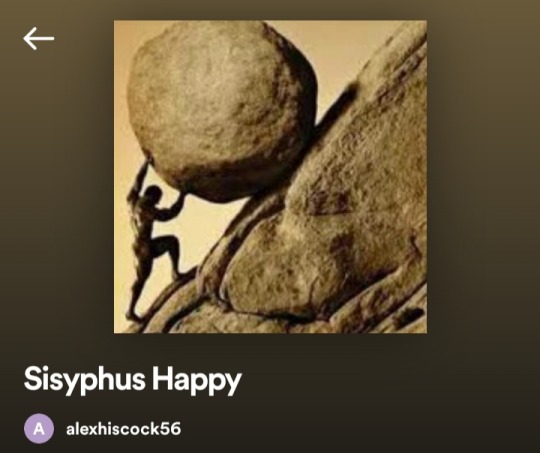
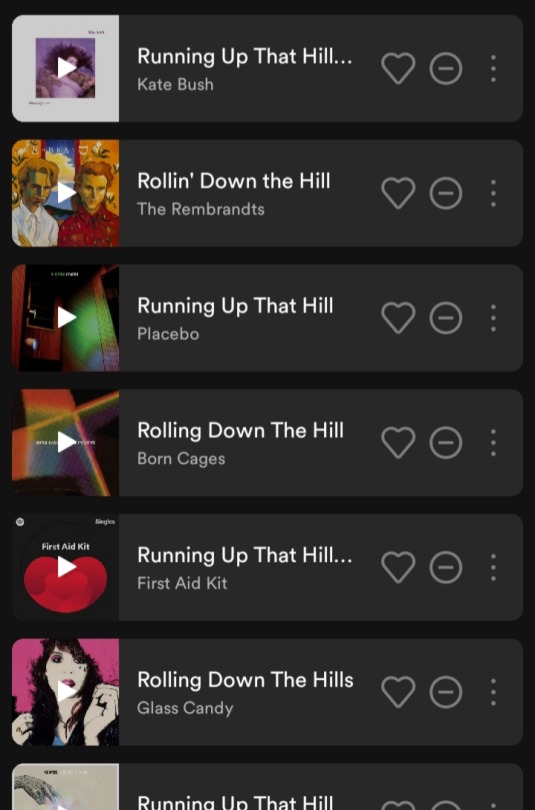
i hate when other people are funnier than me.
184K notes
·
View notes
Link





179 notes
·
View notes
Text
How to write a kiss scene

requested by: anon
request: How do I write a good kiss scene? As how do I describe it? What details or words would make it good?
What goes into the writing of a kiss scene?
details to incorporate:
the sensations in their stomach, their chest, and their knees
the way their breathing changes shortly before the kiss
the feeling of the other's hands
the texture of the other's clothing
the moment they realise they've reached the point of no return
the feeling they're left with after the kiss
words to use...
... to describe the kiss:
tentative
tender
hesitant
quick
soft
gentle
delicate
languid
feathery
familiar
exploring
hungry
heated
fiery
frantic
impatient
sloppy
messy
aggressive
... to describe how they feel about the kiss:
nervous
excited
giddy
anxious
apprehensive
ambiguous
surprised
reassured
certain
confident
relieved
eager
greedy
... to show what the lips do:
exploring each other
brushing over each other
locking
devouring
touching
sealing
pressing against each other
capturing
lapping
tasting
crushing together
travelling (the other's body)
trailing (down to the other's chin)
grinning into the kiss
caressing
lingering
... to show how their body reacts:
feeling warm all over
buzzing
humming
pumping/palpitating heart
clenching lungs
joy bubbling up
tingly stomach
warm chest
burning cheeks
sweaty palms
blood rushing through their veins
... to describe what their hands are doing:
tangling in their lover's hair
wrapping their arms around their lover's neck
intertwining their fingers with their lover
resting on their lover's hips
pressing into their lover's shoulder blades
cupping their lover's cheeks
touching their lover's chin
curling their arm around their lover's waist
resting on their lover's shoulders
grabbing their lover's collar
sneaking up under their lover's shirt
brushing over their lover's bare skin
lightly squeezing their lover's butt
focus on:
the sensations instead of what's physically happening. (the protagonists might very well not know themselves what is happening exactly, but they feel very precisely)
I hope this helps <3
#writing#writing prompt#writing prompts#writing prompt list#writing prompt lists#writing advice#advice for writing
26K notes
·
View notes
Text
i am the unreliable narrator my english teacher warned me about
1K notes
·
View notes
Text
"it was a leader exchange, so Hera had to take Percy" no let's be real here, Annabeth is just as much of a leader at Camp Half-Blood as Percy was. Hera was scared as hell of a pissed-off Percy Jackson on the warpath to get his girlfriend back with all his memories, powers, AND Achilles Curse intact and we should say it
#pjo#percabeth#percy jackson#annabeth chase#heroes of olympus#Hera saw how Percy acted during TTC and decided a Percy who was actually dating Annabeth would be *so much worse*#(and she was right!)
3K notes
·
View notes